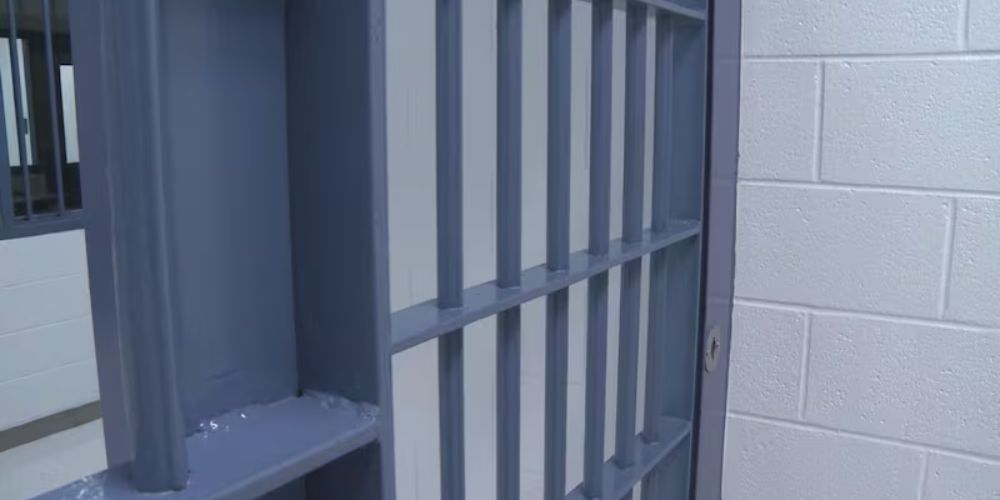California, renowned for its scenic coastlines and diverse urban centers, is home to more than six million residents over the age of 65. For these seniors, rising property values and associated taxes can place a significant strain on finances—especially for those living on fixed incomes. To address this, California counties offer a variety of senior tax exemptions and relief programs, helping older adults maintain their homes and manage the cost of living. This article explores how these tax breaks work, which counties and cities provide them, how seniors can qualify, and what makes each county’s approach unique.
Understanding Senior Tax Exemptions in California
Property taxes in California are governed by state laws, but counties and local districts have significant flexibility to offer exemptions and reductions to seniors. The main forms of senior tax relief include:
-
Parcel tax exemptions for residents over a certain age (usually 65)
-
Property tax postponement for qualified seniors and disabled residents
-
Transfer of tax base value upon home sale under specific conditions
Most programs focus on homeowners who use their property as their principal residence, with additional relief options for those with limited income or disabilities.
Statewide Senior Tax Programs: The Foundation
Several key laws provide the groundwork for local tax relief:
-
Proposition 13: Limits the annual increase in assessed property value to 2%, except in cases of change of ownership or new construction.
-
Proposition 19: Allows those over 55 to transfer the base value of their home to a replacement residence, anywhere in the state, up to three times, potentially preventing a large jump in property taxes after moving.
-
Homeowners’ Exemption: Reduces taxable value of a primary residence by $7,000 for all qualifying homeowners, including seniors.
-
Property Tax Postponement Program: Lets low- and moderate-income seniors defer property taxes on their principal residence.
How Counties and Cities Apply Senior Tax Exemptions
Each county, city, and local district in California may offer additional exemptions on top of basic statewide benefits. School districts, park districts, and some utilities can levy “parcel taxes” that seniors may be able to avoid if they file the correct paperwork.
Counties with Notable Senior Tax Exemptions
Los Angeles County
Los Angeles, the state’s largest county, offers several pathways for seniors seeking property tax relief. While there is no general property tax exemption just for age, numerous school districts—like Los Angeles Unified, Beverly Hills, Santa Monica-Malibu, and Culver City—provide parcel tax exemptions for homeowners aged 65 and older. The city also provides a Utility Users’ Tax Exemption, waiving certain municipal utility taxes for seniors and disabled residents.
To qualify, LA County seniors must generally reside in the home and meet age requirements on the specific deadline set by each school district. For instance, in the city of Torrance, the Torrance Unified School District has a senior parcel tax exemption for residents aged 65 or older who own and occupy their primary home.
Orange County
Orange County, home to cities like Anaheim, Irvine, and Santa Ana, offers a mix of parcel tax exemptions and participation in the state’s postponement program. Most of its school district parcel taxes, such as those in Laguna Beach or Newport-Mesa, allow seniors aged 65+ to apply for exemption, reducing the annual tax bill by several hundred dollars.
Alameda County
Alameda County, including cities such as Oakland, Berkeley, and Fremont, is another leading area where parcel tax exemptions abound. For instance, Berkeley Unified School District and Oakland Unified have dedicated exemptions for seniors for their school parcel taxes. These exemptions have become particularly important as parcel taxes have risen to support local education.
In Oakland, eligible seniors can save over $200 a year per parcel tax, and exemptions can often be renewed automatically after initial registration.
San Diego County
San Diego County combines both parcel tax relief and robust support for Proposition 19’s value transfer provisions. In areas like Carlsbad, Escondido, Chula Vista, and the city of San Diego itself, many local school districts let seniors avoid parcel taxes by submitting an application and proof of age.
The county tax assessor’s office offers outreach and application support, ensuring residents understand the documentation needed for age and ownership verification.
Contra Costa County
Known for cities such as Walnut Creek, Concord, and Richmond, Contra Costa County is notable for its wide range of school and utility parcel tax exemptions for seniors. Most school districts in the county—including Walnut Creek, Lafayette, and Moraga—have senior parcel tax exemption policies, some requiring annual renewal and income verification for low-income seniors.
Notably, Moraga School District and Orinda School District have multiple parcel taxes with different eligibility rules, so seniors need to check renewal deadlines.
Marin County
In Marin, with major centers such as San Rafael and Novato, local school parcel taxes often come with senior exemptions. The Mill Valley School District, Tamalpais Union High School District, and Sausalito Marin City School District each outline senior parcel tax relief, sometimes reducing total property tax bills by over $500 annually for those over 65.
Santa Clara County
Santa Clara County, with cities like San Jose, Mountain View, and Palo Alto, provides widespread senior parcel tax exemptions across 23 of 32 school districts. Not all districts publicize these exemptions widely, so eligible homeowners must actively inquire and apply. Mountain View-Los Altos Union High School District, Cupertino Union School District, and Los Gatos Union School District are among those granting parcel tax breaks to seniors.
Ventura County
Ventura County, which includes Thousand Oaks, Oxnard, and Ventura, follows state rules for the base value transfer but is also home to several utility and school parcel tax exemptions. The county’s tax collector works with senior organizations to help eligible homeowners understand and access these programs.
Santa Cruz County
Santa Cruz County, with key cities like Santa Cruz and Watsonville, provides parcel tax exemptions to residents 65 and older, so long as the ballot measure fundings include enabling exemption language.
Napa County
Napa County, famous for its vineyards and the city of Napa, offers both parcel tax exemptions and the homeowners’ exemption, reducing the assessed value of principal residences. With approximately 21,450 homeowner exemptions in the county, Napa reduces about $150 million in assessed value, which helps offset rising living costs for local seniors.
Other Counties
-
San Mateo County: Cities like Redwood City and Daly City offer parcel tax relief primarily through school districts.
-
San Francisco County: As a city-county, San Francisco’s main relief comes in the form of state programs and the homeowners’ exemption, with select school parcel taxes that allow senior exemptions.
-
Sacramento County: School district parcel tax exemptions are available, but programs vary by district.
-
Monterey County: Salinas and Monterey city school districts offer parcel tax exemptions to seniors, often requiring an annual application.
Typical Benefits and How Exemptions Impact Seniors
Financial Impact
The amount seniors can save depends on the location, the number of parcel taxes levied, and the value of the home. In wealthier districts, exemptions can mean savings of over $1,000 each year, while in other areas, parcel tax exemptions might range from $50 to $500 per year, per tax.
The average annual property tax bill in California is about $4,700, but with increasing property values in counties such as Marin, Orange, and Santa Clara, seniors may face even higher bills if not for the available relief programs.
Eligibility and Application Process
While every county and district has its own forms and deadlines, the requirements most often include:
-
Applicant must be at least 65 years old by a specific date
-
Property must be the principal residence and owner-occupied
-
Proof of age, ownership, and residency is required (e.g., property tax bill, driver’s license, utility bill)
-
Some programs have income qualifications, especially for “low-income” exemptions
Renewal rules vary: some programs require annual applications, while others automatically continue once you file unless the homeowner moves.
Common Exemptions
Here are common types of senior tax program structures seen across California counties:
| Type | Applies To | Example Counties | Typical Savings |
|---|---|---|---|
| School parcel tax exemption | District parcel taxes | Alameda, Contra Costa, Marin, Orange, Santa Clara | $100-$1,000/year |
| Utility users tax exemption | City utility taxes | Los Angeles, San Jose | Varies (5-10% on utilities) |
| Property tax postponement | County property tax | All counties (state-run) | Tax deferral—no immediate saving |
| Base value transfer + exclusion | Property reassessment | Statewide via Proposition 19 | Prevents bill increases after moving |
| Homeowners’ exemption | County property tax | All counties | $70+/year |
Unique County Programs and City Highlights
Berkeley (Alameda County)
Berkeley offers robust outreach on its senior exemptions, ensuring residents know how to apply through city and school channels. Given that the city levies multiple parcel taxes for services like libraries and disaster preparedness, seniors can apply to exempt their primary home from several line items.
Walnut Creek (Contra Costa County)
Walnut Creek seniors can receive parcel tax exemptions from the school district and benefit from special district discounts, such as with the East Bay Regional Park District, which grants a 50% reduction for eligible low-income applicants 62 and older.
Santa Monica (Los Angeles County)
Santa Monica homeowners aged 65 or older may apply for exemption from the Unified School District’s education parcel tax. The city also provides local utility tax exemptions for qualifying individuals, significantly reducing living expenses.
Palo Alto (Santa Clara County)
Palo Alto Unified School District provides a senior exemption, which must be renewed every few years. With some of the highest parcel taxes in the region, this can be a substantial annual benefit for retirees.
Mill Valley (Marin County)
Mill Valley School District sends annual reminders to seniors for the parcel tax exemption process and offers step-by-step application help, boosting access for retirees.
Important Considerations for Seniors
-
Not all parcel tax exemptions are automatic. Seniors should proactively request and submit the necessary forms every year or according to each district’s procedure.
-
The specific deadlines for application often fall in the spring or early summer (May or June).
-
Some exemptions are not well advertised, so checking with the local assessor’s office or school district is critical for up-to-date information.
Statewide Programs Enhancing County Efforts
Property Tax Postponement Program
Available to all qualified California homeowners (including seniors, blind, or disabled with income under a certain threshold), this state-run program allows deferral of annual property taxes. The main conditions are the applicant must have at least 40% equity in their home and meet income guidelines, making it especially helpful in expensive counties like Los Angeles, Orange, and Santa Clara.
Proposition 19 Transfers
Before Proposition 19, only certain counties allowed seniors to transfer lower property tax values across county lines. Now, all 58 counties must honor this transfer, boosting mobility and flexibility for older Californians who want or need to relocate without a steep property tax hike.
The Impact: Keeping Seniors in Their Homes
California’s senior tax exemption programs, especially the county and city-specific parcel tax exemptions, play a vital role in keeping retirees in their homes. This is crucial in cities with soaring home values—San Jose, San Francisco, Santa Monica, and Berkeley—where median home prices often exceed $1.5 million.
Statistics show that nearly 30% of California’s population over 65 pays property taxes on a home owned outright. The presence of available tax relief options is associated with a lower rate of involuntary moves, increased housing stability, and reduced housing cost burden for older adults.
Conclusion
As the senior population in California continues to grow, county-level tax exemptions remain essential for economic stability, peace of mind, and the retention of intergenerational wealth. From San Diego to Santa Rosa, seniors should consult their county assessor, school district, and local government to uncover every available exemption.
Ultimately, California’s patchwork of senior tax exemption programs illustrates the state’s commitment to supporting its aging residents. Proactive engagement, timely applications, and community outreach ensure that retirees across the Golden State—from bustling Los Angeles to tranquil Napa Valley—can not only enjoy their homes longer, but do so with financial security.
If you, your family member, or your client may be eligible for senior tax exemptions in California, reach out to your local government office, consult their website, or request information from your city or school district today. The savings could be substantial, and the peace of mind invaluable.











Leave a Comment